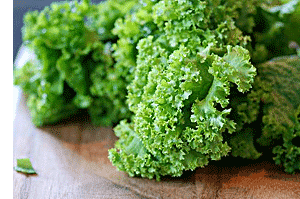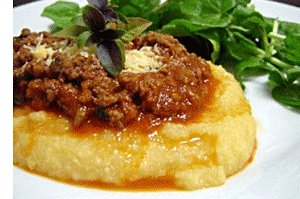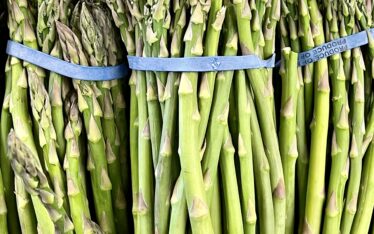 Do you do your best thinking in the shower? When I worked as a software developer and had a program bug I couldn’t figure out I always found my answers in the shower… and I still find them there! Recently it’s come to my attention that there is some hard science behind why I think so well in the shower — negative ions.
Do you do your best thinking in the shower? When I worked as a software developer and had a program bug I couldn’t figure out I always found my answers in the shower… and I still find them there! Recently it’s come to my attention that there is some hard science behind why I think so well in the shower — negative ions.
Negative ions are tasteless, odorless invisible molecules that we inhale in abundance in certain environments. You may already be thinking shower but think more majestically… think beaches, mountains and waterfalls. Ions are molecules that have lost or gained an electrical charge. In nature, they are created when air molecules break apart due to sunlight, radiation, and moving air and water.
Did you ever wonder why you feel so great when you’re walking on the beach? There’s the rhythmic sound of the waves crashing, the smell of the salty air, the sand squishing up between your toes and the expansive sky stretching all the way to the horizon. It’s true that the beach offers a feast for our senses and being away from the normal pressures of home and work can really help us let go. But, in addition to all that, being on the beach actually changes our physiology.
That pounding surf does more than create a pleasing rhythm… it creates negative ions. The air at the beach contains tens of thousands of negative ions whereas the average home or office contains dozens or hundreds or possibly even zero.
Negative ions increase the flow of oxygen to the brain resulting in higher alertness, decreased drowsiness and more mental energy. The air we breathe normally contains both positive and negative ions. Things like air conditioning, a lack of ventilation and long periods of dryness remove negative ions from our air.
Negative ions also help purify the air by “latching onto dirt particles and wrestling them to the ground,” according to Pierce J. Howard who wrote about them in his book, The Owners Manual for the Brain: Everyday Applications from Mind Brain Research.
So, negative ions help us think better, feel good and breath cleaner air…how can we get more of them?
According to Howard, the best ratios of negative to positive ions are associated with waterfalls and the time right before, during and after storms. The worst ratios are found in windowless rooms and closed, moving vehicles (I wonder if that’s why my husband gets so cranky on long car rides?).
This sounds like very bad news for those of us who have a long commute to our climate controlled office buildings.
It turns out however, that some of us are more sensitive to the effects of negative ions than others. According to Howard, a third of the population is particularly sensitive to negative ion depletion.
If you feel sleepy around an air conditioner but are immediately refreshed when you step outside or roll down the window in your car you are in this group.
I’m definitely in this group and not just because I think better in the shower, which, incidentally, is every home’s built in natural ionizer.
Right now, walking in the woods, leaves crunching under my feet like potato chips, is my only antidote to the climate controlled office. Very soon there will be snow and slush underfoot, or under ski, but the antidote retains its power. Outside air in the most natural setting possible can lift your spirits and help you think better.
If you practice yoga you may be familiar with the practice of alternate nostril breathing. This is when, with your mouth closed, you use your fingers to close off one of your nostrils, thus forcing all the air through the other nostril. This ancient practice is thought to balance the hemispheres of the brain and help purify and energize the body. According to Josh Backon, a cardiologist at Hebrew University in Jerusalem, you can increase left hemisphere brain activity (left brain — think linear, language, logical) by blocking off your left nostril and forcing right nostril breathing. Likewise, to increase right hemisphere brain activity (right brain — think creative, emotional, holistic) you would block off your right nostril. According to Backon, this practice increases the supply of negative ions to a specific hemisphere of the brain… yet another case where modern science proves what ancient practices have known all along!
You may have seen advertisements for negative ion generators and air purifiers — it’s important to do some research if you already own or are considering buying one of these units. According to Howard’s book, testing done by Underwriters Laboratory and Consumers Reports discovered that many of these machines emitted dangerous levels of ozone. High levels of ozone can cause wheezing, coughing, chest pain and shortness of breath in the short term and permanent lung damage and premature death in the long term according to the Environmental Protection Agency. You can check Howard’s book for a list of the units that tested satisfactorily or ask manufacturers for an ozone report.
November is here and the days will soon be shorter, darker and colder. This is a season when many people spend too much time indoors…hopefully, you are now more motivated to get outside every day. For people prone to feeling blue in the winter, getting outside during the light part of the day is key to keeping the blues at bay. If you live locally and suffer with the winter blues, consider joining me for a workshop on fighting the blues…see event details below.
Despite your best efforts to get outside, some days the weather just won’t cooperate – remember that you can always open the windows and bring the outside in.
Food Focus: Fall Sweets
 The fall harvest brings many of nature’s sweets. Winter squash, pumpkins and subtly sweet roots like parsnips. Almost all of us crave sweets at one time or another. Instead of relying on processed foods with refined sugar to satisfy your sweet cravings, try adding more naturally sweet foods to your daily diet.
The fall harvest brings many of nature’s sweets. Winter squash, pumpkins and subtly sweet roots like parsnips. Almost all of us crave sweets at one time or another. Instead of relying on processed foods with refined sugar to satisfy your sweet cravings, try adding more naturally sweet foods to your daily diet.
Sweet vegetables soothe the internal organs of the body and energize the mind. And because many of these vegetables are root vegetables, they are energetically grounding, which helps to balance out the “spaciness” people often feel after eating other kinds of sweet foods (think Halloween candy!). In addition, adding in sweet vegetables can help to crowd out less healthy foods in your diet.
Children have a sweeter palate than adults. Incorporating fall’s sweet fruits, apples, pears, grapes and pomegranates’ into your meals offers endless possibilities for creating sweet dishes that will appeal to your children.
Pumpkins aren’t just for pies, muffins and breads – you can roast fresh sugar pumpkin with some olive oil and sea salt and serve it as a side dish or add it to pasta. Or try making the curried pumpkin apple soup below, which uses real maple syrup to sweeten the ante.
Try roasting chunks of apple or butternut squash in the same pan with your chicken. Sprinkle them with cinnamon and some real maple syrup. Elana Amsterdam’s “squash pie”, below, will disappear from your dinner table faster than you can say “squash pie”!
Grapes are a delicious addition to chicken salads and pomegranate seeds liven up green salads. Quarter the pomegranate and use a serrated grapefruit spoon to scrape out the seeds into a small bowl…it’s quick and your family will enjoy eating these little gems without having to wrestle them out of the fruit first!
Parsnips have a sharp flavor and roasting them brings out their very subtle sweetness. Choose larger diameter parsnips and slice into “coins”. Toss coins in a bowl with olive oil and sea salt. Roast on cookie sheet at 400 degrees for 30 – 45 minutes (depending on thickness of coins) for parsnip “chips” that most children will happily scarf down. For a completely different texture, the recipe below for apple and parsnip “mash” can be modified for children – use a ratio of 1 1/2 lbs apples to 1 lb parsnips to make the dish more appealing to kids.
And, although fruits aren’t just for dessert, they do make delicious desserts that you can feel good about serving – see the recipe below for Maple Roasted Pears with Raspberry Sauce.
I wish you and yours a wonderful Thanksgiving and hope you enjoy the sweet fall bounty.
Recipes of the Season
 Curried Apple Pumpkin Soup adapted from Diane Cutillo’s recipe in the “Maple Syrup Cookbook” by Ken Headrich
Curried Apple Pumpkin Soup adapted from Diane Cutillo’s recipe in the “Maple Syrup Cookbook” by Ken Headrich
Ingredients:
4 tablespoons butter
1 small onion chopped (about one cup) – use Vidalia if available
1 apple – Braeburn or Granny smith, peeled, cored and coarsely chopped
2 cloves garlic, pressed or crushed
1 teaspoon curry powder
1/2 teaspoon sea salt
1/4 teaspoon ground coriander
1/8 teaspoon crushed red pepper
2 cups chicken broth
1 cup apple cider
2 cups pumpkin puree (canned works beautifully)
1 cup heavy cream or use light cream or half and half if you prefer a lower fat version
1/4 cup pure maple syrup
Directions:
1. Melt butter in large saucepan over medium-high heat. Add onion, apple and garlic and sauté until soft – about 5 minutes. Add the curry powder, sea salt, coriander and red pepper and cook for one more minute.
2. Add the chicken broth and cider and boil gently, uncovered, for 15 – 20 minutes.
3. Stir in the pumpkin, cream, and maple syrup and cook for 5 minutes.
4. Use an immersion blender to puree if you have one, or transfer the soup in batches to a blender and puree.
5. Return soup to pot and cook for an additional 5 minutes, being careful not to boil.
6. Ladle the soup into bowls and garnish with chives.
Serves 4 – 6
 Squash Pie from Elana’s Pantry www.elanaspantry.com
Squash Pie from Elana’s Pantry www.elanaspantry.com
Ingredients:
2 medium butternut squash, cut in half, seeded
3 tablespoons butter
1 tablespoon vanilla extract
1 teaspoon cinnamon
1/4 teaspoon nutmeg
1/2 teaspoon sea salt
Directions:
1. Brush inside of squash with extra virgin olive oil.
2. Bake squash, face down (skin side up) on a baking sheet in the oven at 400° for 45 minutes or until very soft when poked with fork.
3. Scoop squash out of skin, discarding skin.
4. Place squash in food processor with butter, eggs, vanilla, cinnamon, nutmeg and salt.
5. Puree until smooth and creamy.
6. Place in a 9 inch tart pan or a casserole dish and bake at 350° for 40 minutes
7. Serve
Serves 6 – 8
 Apple-Parsnip Mash adapted from www.marthastewart.com
Apple-Parsnip Mash adapted from www.marthastewart.com
Ingredients:
1 pound parsnips (about 6 medium sized) cut into 1/2 inch pieces
1 pound apples (about 2 large Honeycrisp or 3 Fuji), peeled, cored and cut into 1/2 inch pieces – use more apple if making for children
1 cup of water
1 tablespoon butter
Sea salt and pepper to taste
1 tablespoon pure maple syrup (optional – omit for babies and toddlers)
Directions:
1. In a medium saucepan, combine parsnips, apples and water. Cover and bring to a boil over medium-high heat. Reduce heat and cook, covered until parsnips are completely tender – this took 35 – 40 minutes when I made the dish.
2. Check the pot periodically to make sure the water is not all absorbed. If water is absorbed and parsnips not yet soft, add more water and continue cooking.
3. When vegetables are very soft, transfer mixture to a food processor and add butter, maple syrup (if using) and salt and pepper to taste. Process until smooth texture and serve.
 Quinoa and Apple Salad with Curry Dressing adapted from www.marthastewart.com
Quinoa and Apple Salad with Curry Dressing adapted from www.marthastewart.com
Ingredients:
1/4 cup raw, whole almonds
1 cup quinoa
1 teaspoon honey
1 tablespoon finely chopped shallot
1 teaspoon curry powder
1/2 teaspoon sea salt
2 tablespoons freshly squeezed lemon juice
Freshly ground pepper
2 tablespoons extra virgin olive oil
2 tablespoons dried currants
1 apple, cut into 1/8 thick wedges (leave skin on)
1/4 cup loosely packed mint leaves (optional – leave out for children)
Directions:
1. Pre-heat oven to 350 degrees. Spread almonds on baking sheet and toast in oven until fragrant – about 7 -8 minutes – watch carefully and do not burn! Remove almonds and coarsely chop. Save baking sheet for the quinoa.
2. Rinse quinoa in fine mesh strainer. Continue rinsing until no longer “foamy”.
3. You can dry roast quinoa – put it in saucepan and dry roast over medium heat until it smells nutty – 3 – 4 minutes. This is optional – it improves the flavor but skip if you are pressed for time. Remove quinoa from saucepan.
4. Add 2 cups water to saucepan and bring to boiling. Add quinoa to boiling water, cover, and reduce heat to simmer. Cook covered for 18 minutes.
5. When quinoa finished cooking, spread quinoa out on baking sheet to cool completely.
6. While quinoa cools make dressing: Whisk together honey, shallot, curry powder, salt and pepper and lemon juice. Add olive oil and shake to mix until dressing emulsified.
7. Chop apples and place in a bowl with quinoa, chopped nuts and currants. Add dressing and toss well to coat.
8. Garnish with mint, if using, or parsley
Note: You can add beans to this dish for a delicious vegetarian main course. Serves 4 as a main course or 6 as a side dish.
 Maple Roasted Pears with Raspberry Sauce adapted from Jewish Holiday Cooking by Jayne Cohen
Maple Roasted Pears with Raspberry Sauce adapted from Jewish Holiday Cooking by Jayne Cohen
Ingredients:
3 large, firm-ripe Bosc pears (about 1 1/2 pounds), peeled, halfed and cored
1/3 cup pure maple syrup
1/2 teaspoon vanilla extract
1 tablespoon fresh lemon juice
1 cup fresh raspberries (1 1/2 pint container)
1/4 cup fresh orange juice
3 tablespoons brown sugar or succanat
Directions:
1. Pre-heat oven to 500 degrees
2. Lightly butter an oven proof skillet.
3. Set skillet over medium heat until warm and add pears, core side down. Cook for 2 -3 minutes or until bottom of pears are speckled and lightly bronzed.
4. Turn the pears core side up and transfer pan to oven. Roast pears, turning 2 – 3 times until they begin to caramelize (deeper bronze color) about 7 – 8 minutes.
5. Stir together maple syrup, vanilla and salt and pour 1/2 the mixture over the pears. Continue roasting for 2 – 3 minutes longer and flip pears over. Coat the other side with remaining syrup mixture and roast for another 2 – 3 minutes.
6. Remove pears from skillet and add lemon juice to syrupy juices in the pan. Cook pan juices over medium heat for a minute or two and pour the juices over the pears.
7. Serve with raspberry sauce – see directions for raspberry sauce below:
Simple Raspberry Sauce:
If you have a Vita-Mix simply pulse raspberries with orange juice and 3 tablespoons brown sugar or succanat until smooth. If you are using a conventional blender or food processor you may want to strain the sauce through a fine sieve or put through a Foley to remove seeds. Raspberry sauce can be made ahead and stays good for three days in the fridge. Store it in a glass jar.











Recent Comments